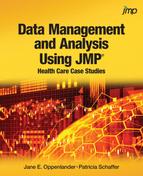Analysis Implications
The analysis
of two of the seven survey questions shows statistically significant
differences in perception between leaders and nurse professionals.
Based on these findings, the Nursing Research and Evidence-based
Practice Council Analysis can take a number of actions to continue
to refine their understanding of the barriers and facilitators to
EBP. This can be done by continuing to analyze the survey results
and further investigating the ways in which EBP has been implemented
at the hospital. For example, have leaders received more training
in EBP or do their work responsibilities allow them more time to engage
in nursing research?
Our analysis showed
a significant difference in how the different organization levels
perceive EBP in the context of the practice setting, so a next logical
step would be to examine the responses by the variable “Acute
inpatient care unit” which identifies the care setting (e.g.,
intensive care, labor and delivery, and psychiatry) in which the nurse
works. Also, the five remaining survey questions should be analyzed.
The influence of the other demographic variables should
also be investigated. This may reveal the presence of lurking or
confounding variables. A lurking variable is one that was not collected
by the survey but has an influence on the relationship between EBP
perception and organizational level. A potential lurking variable
might be whether a nurse has previously worked at a magnet hospital.
A confounding variable is one that is collected in the survey and
has an influence on the relationship between EBP perception and organizational
level. For example, all (or many) of the leaders may be older while
many of the nurse professionals may be younger. In this situation
organizational level is confounded with age. More advanced multivariate
methods such as factor analysis may yield additional insight into
the perception of EBP in the nursing workforce.
When interpreting the
results you should be mindful of the limitations in the survey. The
responses represent a non-random sample and the overall response rate
was only 30%. Since this was a voluntary survey, self-selection bias
may be present. It is possible that the nurses who chose to respond
may be more engaged in EBP or hold stronger opinions about its implementation
at the hospital. It is interesting to note that 18% of the nurses
did not respond to these two survey questions. This suggests these
nurses may be concerned about how the survey data will be used or
that their responses can be personally identified from the demographic
information. Despite these concerns, the survey and this analysis
provide valuable information that could be used to advance the hospital’s
goal of achieving magnet designation.
Last updated: October 12, 2017
..................Content has been hidden....................
You can't read the all page of ebook, please click here login for view all page.
